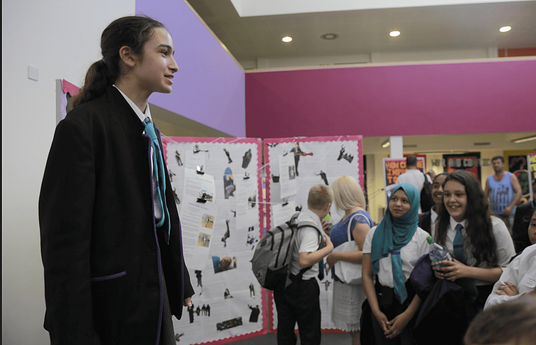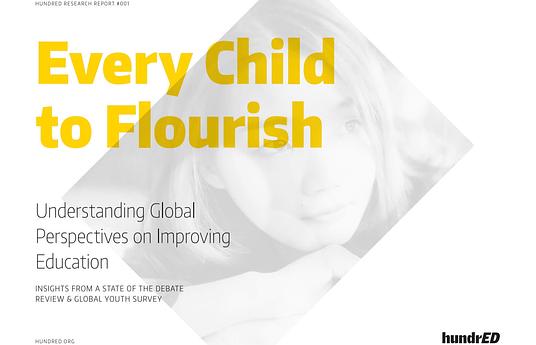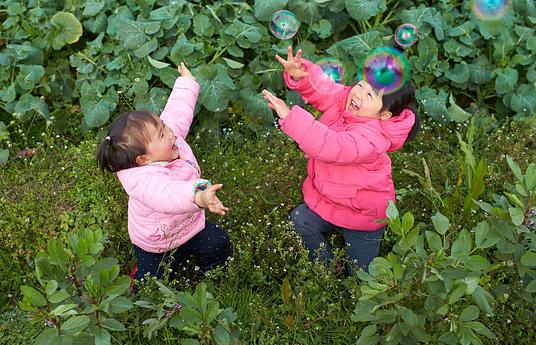Dutch teenagers have, once again, been found to be amongst the happiest students in the world. This is no mean feat during a time when adolescents are grappling with increasing levels of mental health issues and face uncertain futures. So how do they manage it? Apparently it all comes down to strong social connections with their friends, teachers and parents.
This aligns with the findings of our global youth survey, detailed in our research report ‘Every Child To Flourish’ (read it for free here). 58% of the students wanted schools to increase their focus on life skills, such as empathy, communication and collaboration, and highlighted the necessity to develop their interpersonal and intrapersonal skills.
The survey also found that 46% of students wanted to build better relationships with their teachers and other school staff. This goes to show that plenty of students are actively looking to hold strong relationships with their teachers but currently either don’t have the opportunity to do this, or simply don’t know how.
If you’re still not convinced, the longest study ever conducted on happiness followed two groups of people throughout their lifetimes, one group made up of Harvard graduates, the others from Boston’s poorest neighbourhoods. Though they all had different life experiences, the mounds of information from the seventy-five year study consistently showed that happiness comes from strong social connections, and that loneliness literally becomes toxic.
Those who had a strong network of people around them that they loved and trusted, were happy no matter their position in life. It trumped career, wealth, lifestyle, health, fame… everything. Perhaps then, teaching students how to communicate and build fruitful connections, whether friendly or professional, should be a high priority for educators.
Learning the foundations of communication
Teaching these skills doesn’t have to feel formal, it can come from a joyous experience, as in the educational programme Muttigrees which sees dogs being brought into educational settings.
Muttigrees is founded on the proven benefits of human-animal relationships, which can help people to feel calmer and more prepared to be socially connected. The unique curriculum blends socio-emotional learning with interaction and activities with the dogs.
Lessons are split into five categories, Achieving Awareness, Finding Feelings, Encouraging Empathy, Cultivating Cooperation and Dealing with Decisions. These lessons develop socio-emotional skills that provide the strong foundation to create deeper social connections and help children to make good decisions for themselves and others.
The dogs are cleverly used as a segue way into considering how humans act. Children first observe and talk about what’s happening with the dogs, moving on to thinking about the differences between a dog’s reaction and a human’s and then discussing how humans interact with each other. This is a natural way to start children thinking about how to be compassionate and empathetic, with the idea that this will then lead to them being able to communicate and understand others better.
The Muttigrees curriculum has been so impactful that it is now active in over 4000 schools across the US, and counting!
Teaching non-verbal communication
When learning about communication, it’s also vital that we help young people to understand non-verbal elements too. Roots of Empathy is an initiative that sees babies being brought into schools in order for children to learn about this silent form of communication.
In the sessions a qualified Roots of Empathy instructor asks the children questions about what’s going on with the baby. The instructor never tells the children if they are right or wrong, just asks more questions to get children to think critically about what the baby is up to and what they might be doing, thinking or saying non-verbally (as the baby can’t speak yet).
For instance, in her Roots of Empathy talk at the HundrED Summit last year, RoE creator Mary Gordon described how an instructor in one session asked the group, ‘Why do you think baby Mae turned around to her mummy?’ A boy then involved in the session replied, ‘Baby Mae turned around to her mummy to ask, am I OK? (...) and the mummy said, you’re good to go.’ His reply shows how he could interpret the communication between the baby and the mother even though neither of them had said a word.
By understanding non-verbal communication, children can grow-up to build stronger relationships by picking up on subtle shifts in body postures and facial movements to understand what their friends, families, co-workers and acquaintances are feeling, and adjust their own communication accordingly.
Establishing public communication skills
Communication skills are often high up on an employer’s desirable skills list and privately educated students are usually prepared for this by learning how to give speeches and communicate effectively whilst still at school. However, state education can lack in opportunities for oracy, leaving children from less-privileged backgrounds at a disadvantage.
As Jani Toivola, Finnish MP explains, ‘Social skills and getting along with others are the most important contributing factors in why there is inequality amongst young people. It feels almost elitist to embody these skills, although they should be the basic tools that everyone has the opportunity of learning.’
This inequality hasn’t gone entirely unnoticed however, as Voice 21 goes to prove. Voice 21 started as a state-funded school in East London, called School 21. At School 21, children at the very start of their educational career learn the fundamentals of oral storytelling, as they get older they learn to give their own Ted-style talks and children participate in workshops that teach them how to have constructive conversations and communicate effectively.
Why is verbal communication so vitally important for everyone to learn? Oli de Botton, Head Teacher at School 21, explains, “Voices have the power to shape viewpoints, resolve differences and overcome obstacles.”
Not only will this help students do well in their careers later in life by allowing them to succinctly and confidently communicate their ideas, it’ll help them to build healthy, fulfilling relationships with their friends, families and colleagues. Conflict often springs from miscommunication and misinterpretation, so being able to communicate clearly is a vital skill to create meaningful and strong relationships.
Voice 21 was created in order for the people behind School 21 to share their approach with others. The organisation takes what they’ve learnt at School 21 and share their knowledge with other educators who want to pass on the fundamental skill of oracy in their own schools. Voice 21 provides teacher training and events to help educators get to grips with how to make these skills a reality in other schools.
Learning to speak eloquently, understanding the nuances of non-verbal communication and knowing the fundamentals of social connections, can truly enhance children’s prospects from their careers to their own social lives at home. These skills not only help children to enjoy happier, more fulfilling lives, no matter what trials they may face, but can help society as a whole heal and work together. In a time where communication is instant, short, sharp and anonymous – as social media allows – it’s never been more important for future generations to be communicatively literate and able to build strong social connections.




